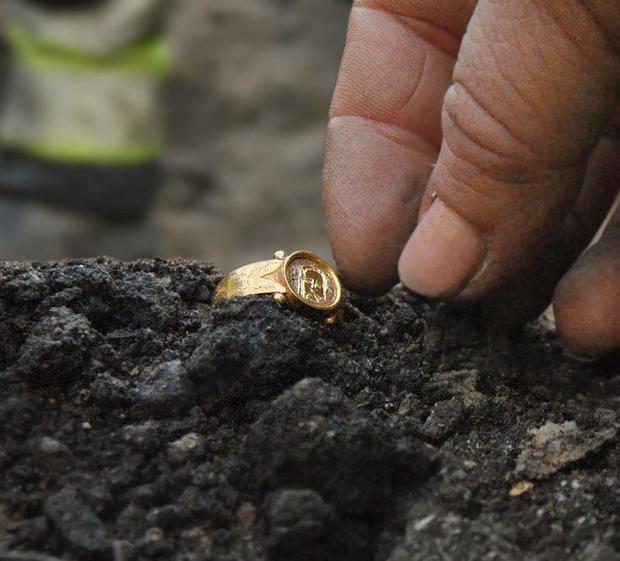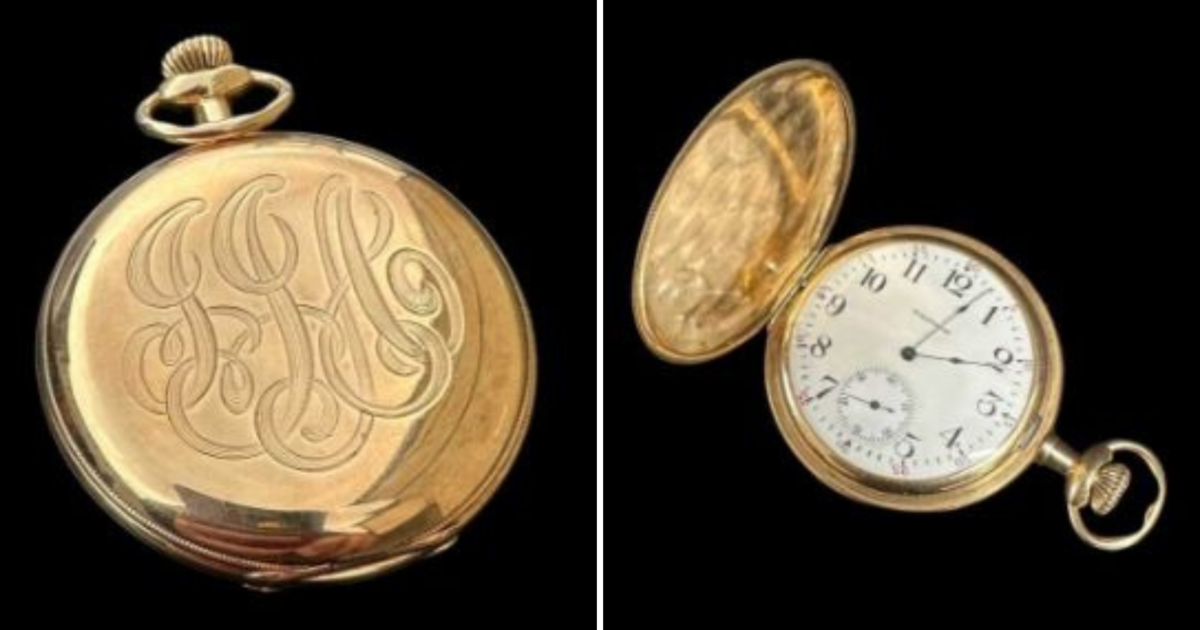Gold ring found in Sweden about 500 years after "unlucky" person likely lost it
Swedish archaeologists said they recently uncovered a trove of ancient relics, including a gold ring that was likely lost centuries ago.
Two archaeological investigations have been ongoing in Kalmar, a coastal city in southwest Sweden, according to the Archaelogists, which is part of the government's National Historical Museums agency. The investigation has looked at the medieval city built on the same grounds.
Researchers excavating the area have found around 50 medieval plots, about 10 streets and parts of an old city wall, the agency said. They've found major sites, including buildings and cellars, and smaller, everyday objects. The discoveries have been dated from 1250 to 1650, with the youngest items being about 400 years old. The results of the investigations are "beyond all expectations," the agency said, especially the unusual discoveries of streets and walls.
The medieval city was razed by battle in the 1600s, the news release said, but despite the damage, large parts of it remained ripe for investigation.
"We have been able to lift the lid on the city's Middle Ages and have had the opportunity to study how people lived, what they ate and drank and how this changed over time," said Magnus Stibéus, a project manager at the Archaeologists. "Archeology becomes like a peephole into medieval history that allows us to learn more about how life was several hundred years ago."
The gold ring was one of two smaller but "spectacular" finds, the agency said. The ring was in almost-new condition despite being dating back to the 15th century, and has a carved figure of Jesus Christ. The ring is small, and might have been worn by a woman. Similar jewelry has been found in other parts of Sweden, and in Finland. Stibéus speculated that someone was "unlucky and lost the ring" half a millennia ago.
Another impressive find was the discovery of an alsengem, or small glass stone believed to have been used as a pilgrim amulet. Such objects were first found in Denmark. The one found in the Swedish investigation is believed to date back to the 13th or 14th century, and features three carved figures. However, the item was broken and might have been thrown away by its owner, Stibéus said in the news release.
Other interesting discoveries included a preserved brick cat paw print, and a rune stone found amid what may have been a 12th-century burial mound.
Such discoveries have made it possible to learn more about "large parts of the medieval city" and understand a wide range of different groups, including "traders, craftsmen, civil servants, church people, poor and rich," Stibéus said. Further excavations of the area are ongoing.





